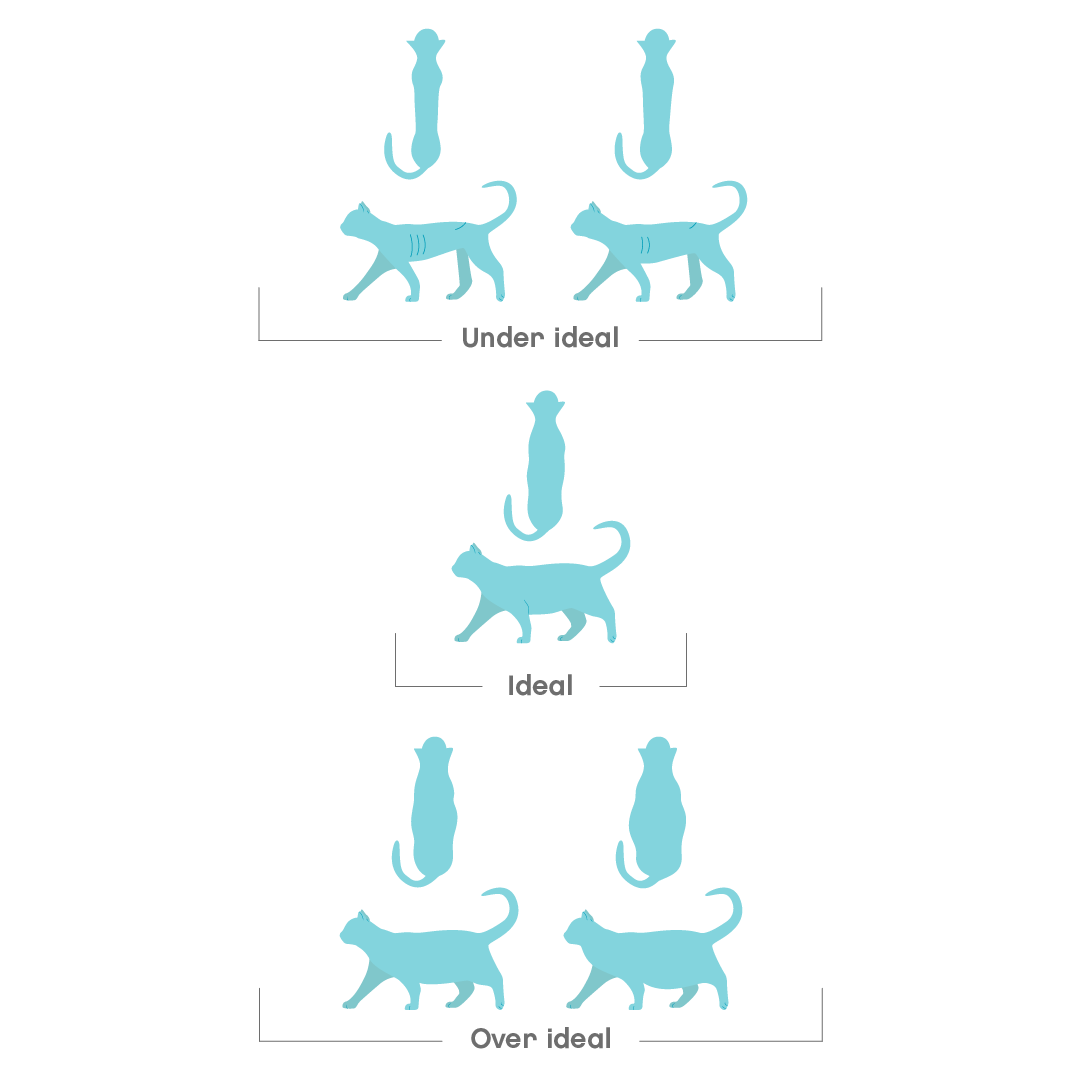There are many different causes of pain in cats. Cats try to hide when they are in pain, so the signs may be subtle. The symptoms of pain can appear as physical and behavioural changes and can affect cats of any age. Recognising these symptoms and seeking advice as soon as possible is important.
Pain can range from mild to severe and can be acute (short-term) or chronic (long-term).
Many human pain relief medications are highly toxic to cats. Never give your cat any pain medication without speaking to a veterinarian.
What to do
What to do if your cat is in pain
If your cat shows any signs of pain, speak with a veterinarian.
They will be able to:
- Determine whether they need a physical appointment and any further tests.
- Determine if they need pain relief.
In the meantime, make sure your cat has somewhere quiet and comfortable to rest. Avoid touching any painful areas.
How to tell if your cat is in pain
Cats are prey animals as well as hunters. It may not always be obvious when they are in pain.
They may show one or more of the following signs:
Physical signs of pain
- Limping, stiffness, or moving more slowly
- Not eating or drinking
- Licking or biting at certain areas of the body. Leading to areas of hair loss.
- Decreased grooming. Leading to poor hair coat and build-up of mats.
- Panting
- Toileting outside of the litter box
Behavioural signs of pain
- Sleeping more than normal and less active
- Aggression or irritability
- Hiding away, less social interaction
- Avoiding jumping onto beds or furniture
- Shaking and trembling
- Vocalising more, hissing, growling and meowing
Facial expressions that may indicate pain
- Flattened ears, eyes narrowed, and tense mouth, cheeks and nose.

Body language that may indicate pain
- Hunched posture, head held lower, tense body and flinching when approached or touched.
Causes
Most common causes of pain in cats
- Sprains and strains, which can cause Limping
- Arthritis
- Skin and ear infections
- Blood clots (due to heart disease, Hyperthyroidism and lung cancer)
- Dental disease: Bad breath
- Wounds: fight injuries, cuts and scrapes, such as Cat bite abscess
- Pain after surgical procedures
- Respiratory and urinary tract infections, such as Blocked bladder
- Pancreatitis
When to worry
When you should be worried about pain in cats
Seek help from a vet if
- Your cat is unable to put any weight on one or more of their legs.
- Your cat becomes paralysed.
- Your cat needs pain relief.
- Your cat has suddenly become aggressive but hasn’t had a physical exam in the last 6-12 months.
Joii can help if
- You are unsure if your cat is in pain.
- You have any questions about joint or other supplements in cats.
- You have any questions about tooth brushing in cats.
- You need advice about how to help your cat lose weight.
- Your cat is showing mild signs of pain and you are unsure what to do.
Prevention
Tips on how to prevent your cat from being in pain
Not all types of pain are preventable. Seek help from a veterinarian at the first sign of pain developing. Early treatment results in a better outlook.
- Joint supplements can help with mobility and stiff joints. Some supplements can help with skin, urinary, dental, and digestive diseases.
- Keep your cat up-to-date with their vaccinations and flea and worming preventatives.
- Regularly check your cat’s teeth and use any dental hygiene products as advised.
- Avoid breeding cats with severe degenerative joint diseases.
- Keep your cat at a healthy body weight and feed good-quality, complete food.
Body Condition Score (BCS) is a scale that gives a practical evaluation of the fat coverage of your cat’s body. By checking how easy or not it is to feel certain bony areas of the body, a score is then produced. There are several scales, from 1 to 5 or 1 to 9. The ideal body condition lies in the middle, so either 3/5 or 5/9. The body areas normally checked for fat coverage are: 1. ribs and spine 2. hips and shoulders 3. waist Here are a few tips on how to do it. With your pet in a standing position:
Body Condition Scoring (BCS) in cats

Diagnosis
Diagnosis of the different causes of pain
The following tests may be performed to find out what is causing the pain
- A full physical examination
- Blood and urine tests
- Imaging, such as x-rays, ultrasound, CT or MRI scan
Home treatment
How to help your cat at home if they are in pain
You can help your cat recover at home in many different ways.
- Allow them to rest. Make sure they have somewhere comfortable and quiet to sleep.
- Keep food, water and litter trays easily accessible.
- Give any medication as advised by your vet. Keep to the correct dose and time as advised.
Painkillers for cats are only available on prescription. Do not give any human medications unless advised by your veterinarian. https://www.vpisglobal.com/common-poisons/
- Heat packs are helpful for muscle pain and joint stiffness. Ice packs can help reduce inflammation and pain in an acute injury. Wrap the packs in a towel to avoid any discomfort.
- Supplements may be helpful for certain problems, such as joint or skin conditions.
- Zero exercise is recommended if the pain is due to a musculoskeletal or neurological disorder. This includes arthritis, spinal disease, and soft tissue injuries. Keep your cat indoors or in a crate if advised to do so.
- Check your cat often. If they still seem to be in pain, speak to your vet. Medication may be reviewed regularly to make sure the pain is well controlled.
Vet treatment
Vet treatment of pain in cats
The treatment will depend on the cause of the pain. Several different treatments may be required at the same time. Some cats may need hospitalisation for monitoring until they are stable.
Pain relief
- There are many different types of pain relief medications available for cats. The type prescribed by your vet will depend on how severe the pain is, the cause, and the location.
- Pain relief doses may need to be changed or new medications added along the way, depending on how the disease progresses or improves.
- Pain relief medications for cats include NSAIDs (non-steroidal anti-inflammatories), opioids, gabapentin, amantadine, and others.
Other medications
These will depend on the cause of the pain
- Antibiotics or antifungals
- Anti-itch medications
- Medication for the digestive tract, such as anti-nausea or antacids
Surgery
If the pain is due to
- Dental disease
- Spinal problems
- Fractures or dislocations
- Wounds
Complementary therapies
- Acupuncture
Available from specially trained veterinarians in the UK. Commonly used to help with pain, specifically longer-term pain such as arthritis. Can help with other diseases too.
- Physiotherapy
Useful to aid recovery after surgery or an illness. Should be done by trained professionals; you can find them on the following website.
- Hydrotherapy
Useful for a variety of conditions such as spinal disease, arthritis, and soft tissue injuries.
Should be done by trained professionals, you can find them on the following website.
- Laser therapy
Used to reduce pain and inflammation, often alongside pain medications.
Risk
Are some cats more at risk of pain than others?
Cats of all breeds, ages, and genders can develop pain. Specific causes of pain may be more common in some cats than others.
Sprains
- Overweight cats
- Very active cats and kittens
Arthritis
- Overweight cats
- Cats with developmental joint problems
- Cats that have had previous injury, trauma or surgery involving a joint
- Certain breeds, such as Maine Coon, Persian and Scottish Fold.
Dental disease
- Older cats
- Some breeds are at higher risk, such as Abyssinians, Maine Coons, and Somalis. Brachycephalic cat breeds are also more at risk, such as Persians, Himalayans, and Burmese.
Blood clots
- Middle-aged, male cats at higher risk
- Certain breeds, such as Ragdoll, Birman and Abyssinian.








